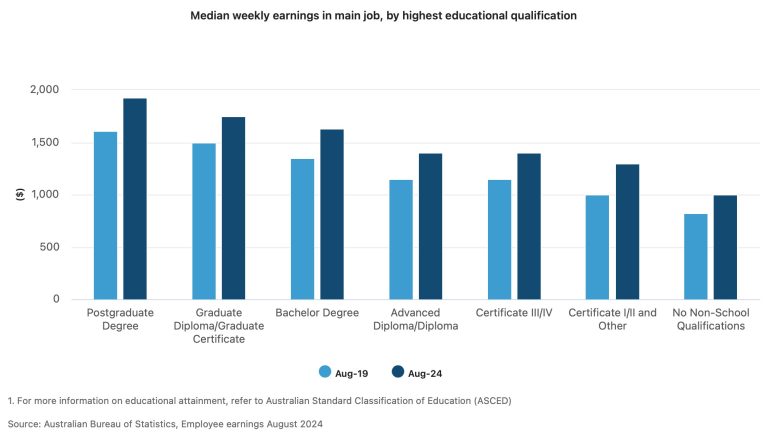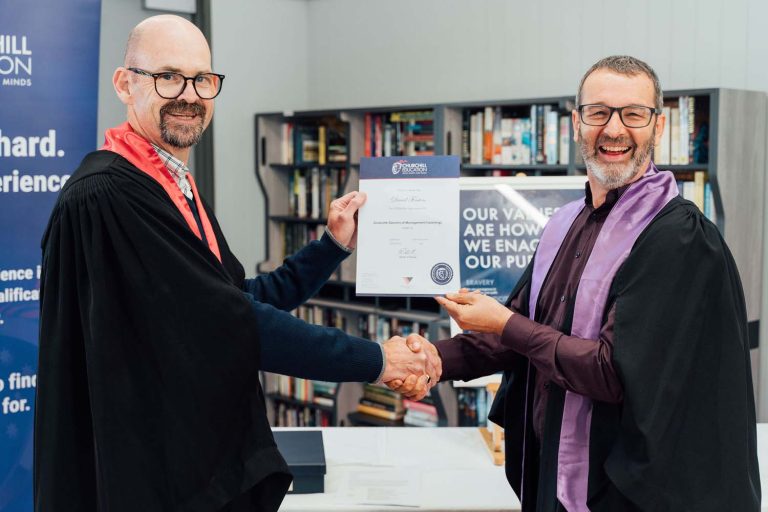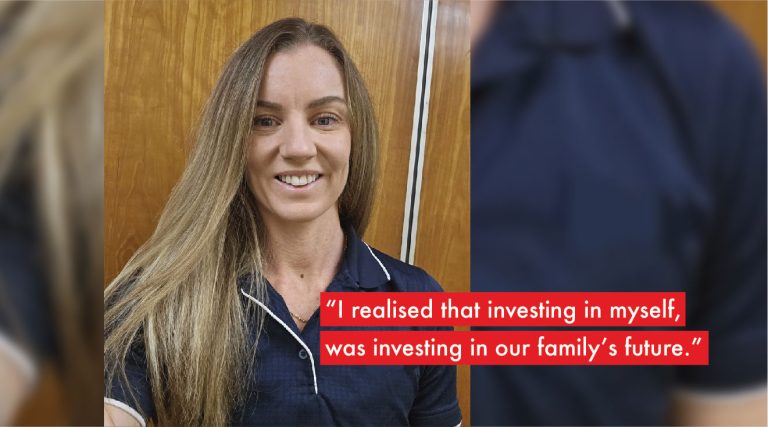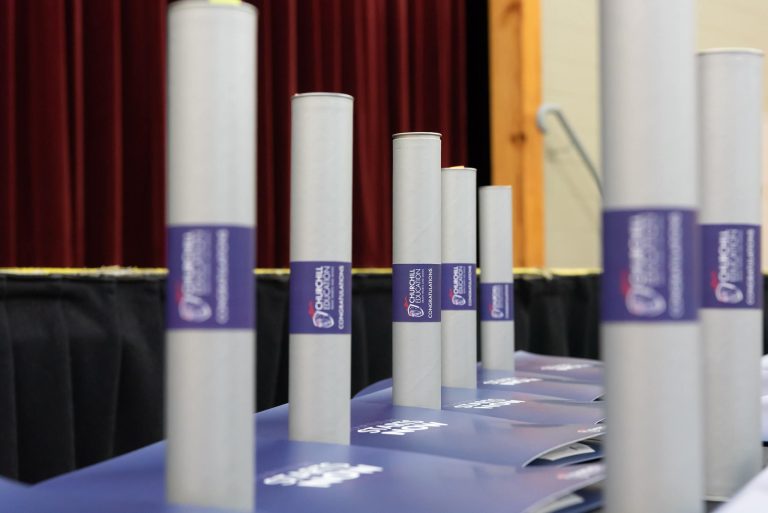Welcome to a brand new year full of endless possibilities! If you’re dreaming of making a step up in your profession this year, or into a completely new industry, here are 6 expert career change tips from our friend and Career Transition Coach, Nikki Paterson at Accomplish Education:

I love the New Year. For me, it’s akin to a fresh diary—pristine, uncluttered, and full of possibilities.
And this includes career possibilities.
After the Christmas break, when we’ve had time to reflect and step away from work routines, many people start to wonder if their current role, or even their industry, is still the right fit.
As a Career Transition Coach, I’ve seen this time and again, and here are some of the key strategies I share with my clients to help them navigate a career change.
1. Get Clear on You
It’s tempting to skip self-reflection and dive straight into job hunting, but knowing yourself is the foundation of a successful career transition.

To avoid ending up in a role that feels misaligned, take some time to get clear on your values, drivers and motivations.
Start by asking yourself:
- What lights you up about your current role? What tasks leave you feeling fulfilled and energised?
- What drains or frustrates you? If you could wave a magic wand and never do certain tasks again, what would they be?
Go beyond the tasks themselves and uncover the underlying themes. For instance, if you love implementing new systems, is it because you enjoy problem-solving and innovation or because you crave variety and dislike routine?
Similarly, if you dislike sales calls, is it the pressure of meeting targets or something else entirely?
It’s also important to reflect on your values and what’s intrinsically important to you.
Do you prioritise:
- Autonomy
- Financial stability
- A sense of purpose
- Flexibility in how and where you work
These priorities can shift over time; What was important to you when you took on your current role or chose your current industry may not still hold true now.
Getting clear on this also helps inform decisions around whether you choose full-time, part-time, or contract work, as well as flexible working arrangements, locations, travel times, etc
Just because you’ve done something one way up until now doesn’t necessarily mean that it serves your current situation or your future aspirations.
2. Identify Your Transferable Skills
The next step is identifying the skills you’ve gained from your current and past roles that can transfer to new industries.

This is where a lot of people get stuck, focusing too much on the tasks or context of their work rather than the skills underpinning those tasks.
For example, I often work with first responders who struggle to see how the unique tasks they perform translate to other industries.
Tasks like managing public order or responding to emergencies might seem specific, but the underlying skills—exceptional communication, critical analysis, quick decision-making, and teamwork—are highly transferable and in demand across many fields.
Your transferable skills are the nuggets of gold you accumulate throughout your career. The value of which, you bring to your next role.
And the best bit? You can turn these skills into formal qualifications through Recognition of Prior Learning. RPL is an alternative assessment method to study that matches your skills and experience to national qualifications.
Churchill Education offers a zero-cost appraisal that will show you what you’re eligible for. Book a free chat with a Churchill Career & Education Advisor here.
Peel back the layer of “what” you do and focus on “how” you do it. Those underlying skills, along with the outcomes and results you’ve achieved, are what you bring to your next role.
3. Create a Brag Book
I always recommend that everyone create and maintain a brag book throughout their career.

A Brag Book is an evidence-based database of your experience and results that you can draw on when writing job applications, preparing for interviews, or looking for inspiration for a new career direction.
To start your brag book, set a monthly reminder to reflect on your accomplishments and document them. Include details like the challenge you faced, the actions you took, and the results you achieved.
Over time, this habit will save you hours when you need examples for a resume, interview or for RPL —and it’s a great antidote to imposter syndrome.
Here’s a link to my Brag Book template you can use to start your own Brag Book.
4. Close the Gap
Part of transitioning careers is identifying and addressing any gaps in your skills, knowledge, or qualifications.

Start by researching roles and industries that interest you. Job advertisements can provide valuable insight into the skills and experience required.
Once you’ve identified gaps, consider ways to bridge them:
- Look for opportunities to gain relevant experience in your current role. For example, volunteer for projects or take on additional responsibilities.
- Pursue unpaid roles, such as becoming a workplace safety representative or volunteering with community organisations.
- Use Recognition of Prior Learning (RPL) to formalise your existing skills and experience into qualifications.
The Career Transition Skills Audit Worksheet will help you identify these gaps and create a plan to address them.
5. Tailor, Tailor, Tailor
If I didn’t think I’d get so many weird stares, I’d get a t-shirt printed that says, “Death To The Generic Resume!”
Dramatic, I know. But nothing will get you to the top of the ‘No’ pile quicker than a generic resume.

You need to present a highly curated and tailored document that explicitly shows the recruiter or employer, using evidence-based statements, that you are not only perfectly aligned to the role and will excel at it.
This means:
- Crafting a targeted career profile and skills summary.
- Highlighting relevant achievements with evidence-based examples.
- Addressing the specific requirements of the role using keywords from the job description.
I find it useful to digitally highlight keywords that you need to address in the position description in orange, then change them to green as you address them in your application documents.
This visual system ensures you’ve covered everything and have a tailored and targeted document.
6. LinkedIn Strategy
Your LinkedIn profile is your digital professional home and can play a critical role in your career transition.

Firstly, update your Headline and About Section to reflect the change you’re trying to make, using relevant keywords for the roles or industries you’re targeting.
Ensure your profile picture is professional and current, and update your Skills section to align with the requirements of your desired roles.
Next, follow prospective employers, connect with people in those organisations, and engage with their content through genuine and insightful comments. This not only keeps you informed but also demonstrates your interest and initiative when recruiters view your profile.
Closing Thoughts
The New Year, much like a fresh diary, is full of opportunities and possibilities to redefine your career path.
By getting clear on your values and skills, using tools like a Brag Book, leveraging RPL and tailoring your approach to applications and networking, you’ll set yourself up for success.
Each step forward builds momentum and brings you closer to a career that aligns with your aspirations and potential.
Here’s to new beginnings and new opportunities in 2025!
Thanks Nikki! If you need someone in your corner to guide you through career transition to nailing your dream job, we highly recommend you get in touch with Nikki who will be able to help you with everything from interview coaching to job application training and resume writing.
And start your new career year powerfully with a free RPL appraisal and find out what national qualifications you’re already sitting on! Apply here, or via any of the methods below.

